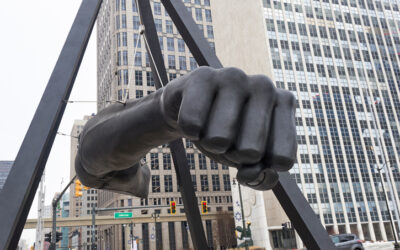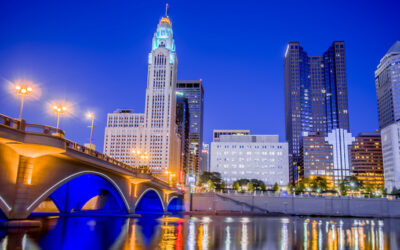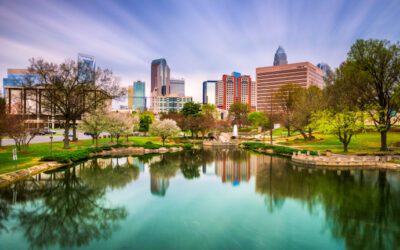When you imagine a New York accent, what do you hear?
My mind goes straight to Dustin Hoffman in the movie Midnight Cowboy; when a taxi nearly knocks him down, he smacks the hood and yells “Hey! I’m walkin’ here!”
The way people speak in New York is legendary, and almost everyone has an impression in their back pocket. And here’s the truth: a lot of New Yorkers still talk like that. Many don’t— as with all American accents, it’s a little more difficult (but not impossible) to find someone under the age of 30 who drinks “cwoffee” and pets “dawgs.”
There are all sorts of ways to talk like a New Yorker, but this is what you need to know if you want to fit in:
The basics
The New York accent has a couple of instantly recognizable characteristics: the first is elongated vowels. “O”s and “A”s can sometimes stretch over multiple syllables, or be curled up inside the mouth (this is the case when saying “Thirty-Third and Third” like “Toity-Toird and Toid”).
New Yorkers speak as fast as they can, and are known to drop consonants (hence “walkin’” versus “walking” in “I’m walkin’ here!”) Because they speak so quickly, they’re prone to combine short phrases into a single new word.
This can result in some pretty unique pronunciations— “Long Island” becomes “Lawn Guyland” and “Far Rockaway” melts into a single word, “Furrockaway.” Across the Hudson, New Jerseyans have famously shortened “capicola,” a spiced Italian ham, to “gabagool.”
CARMELA WHERE IS MY GABAGOOL pic.twitter.com/7GnlLaCG9D
— eric (@Eric_maste) February 8, 2018
Every borough is New York City, but if you say “The City,” you are talking about Manhattan. When you take “the train”, you identify it by the name of the line. So you would say “I’m on the 6,” not “I’m on the green line.”
On the train you might hear a young voice yell “Showtime!” Move out of the aisle– that’s what it’s called when riders start breakdancing for tips.
New York is where “mad” transformed from a noun to an adjective. So in New York, you’re not just tired—you’re mad tired. If you’re hungry for pizza, you can either grab a “pie” or a “slice.“ If you’re short on cash you can get a “dollar slice” at 2 Bros, or elsewhere.
That corner store at the end of the block might be a deli, but it’s probably a “bodega.” There’s definitely a cat inside.
There is more than one dialect in NYC
One of the most important skills in talking like a New Yorker is being able to detect where the person you’re talking to comes from. Every borough has a distinct way of speaking, and a real New Yorker always knows which is from where.
If you’re moving to Manhattan, you may not notice an accent all – the Manhattan dialect is the least pronounced of all the boroughs. Fast-talking and high-gliding vowels define speech in “The City.” Its heyday was in the 1970s, but at this point, it’s practically non-existent.
Head to The Bronx and you’ll discover the exact opposite. Let’s just say there’s a reason they call it “da Bronx.” The Bronx dialect is punchy and can even get cartoonish. It serves as home to the classic Mike Myers Saturday Night Live character Linda Richman, who would catch America up on all sorts of “tawk” about “cwoffee, daw-ters, and dawgs.”
Head over to Queens for a more musical, and much more nasal dialect. Kind of like a certain real estate developer-turned President of the United States.
Brooklynites are known for hitting vowels and syllables aggressively— In the mouth of a Brooklynite, the borough’s Dekalb Avenue transforms from the understated “de-kahlb” to the vigorous “DEE-kalb.” Imagine movie star Rosie Perez.
The only thing that separates Staten Island from New Jersey is a measly little creek, and it’s reflected in their dialect. If you want to talk like someone from Staten Island, I would recommend watching The Sopranos.
Hard to Pronounce Places in New York City
New York City is full of confusing place names; the city’s Dutch forebears made sure of that, but New Yorkers of all stripes have contributed to this list of easy-to-mispronounce landmarks:
HOUSTON STREET (HOW-STUN): This ain’t the city in Texas. Manhattan’s Houston Street was named after the Georgia-born statesman William Houston, and is spoken with his family’s distinctly Scottish brogue. Saying it wrong is a surefire way to be spotted as an outsider.
https://twitter.com/newyorkcityinfo/status/935928763174543360
KOSCIUSZKO BRIDGE (kash-CHOOV-ska): This important piece of highway connects Brooklyn and Queens—hearing an AM radio host mangle its name is a staple of morning traffic reports. While this pronunciation is technically correct, most New Yorkers opt to say “KA-SHOE-SKOH” or the phonetic “KA-SEE-AH-SKO.” The bridge is named after Tadeusz Kosciuszko, a Poland-born Revolutionary War officer and friend of George Washington.
SPUYTEN DUYVIL (SPY-TEN DIE-VOLL): This ritzy Bronx neighborhood is Dutch for “the devil’s spout,” a reference to the nearby pool of rocks in the Hudson that have spelled doom for passing boats for hundreds of years.
SCHERMERHORN STREET (SKER-muhr-horn): An 18th Century Dutch shipbuilding tycoon lends his name to this Downtown Brooklyn Street. It’s famous for its dingy “Hoyt-Schermerhorn” subway transfer hub, the set of Michael Jackson’s music video for the 1987 hit “Bad.” (Directed by Queens-native Martin Scorsese no less!)
THE GOETHALS BRIDGE (GOH-THOOHLS): Named for George Washington Goethals, the origin of this bridge is Flemish, not Dutch.
New York City is a melting pot. Residents of every country and state on Earth have made the city into their home and, in the process, changed the way locals talk. You’ll be doing the same, and with any luck these tips will help get you into a New York State of Mind.


